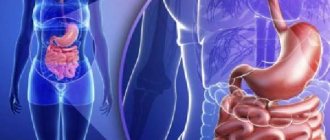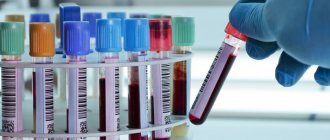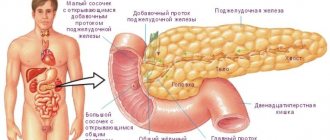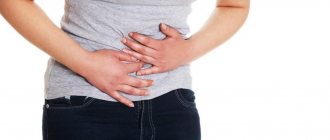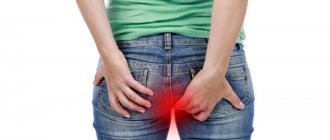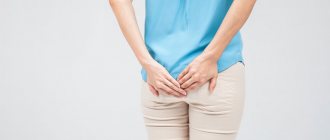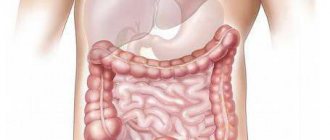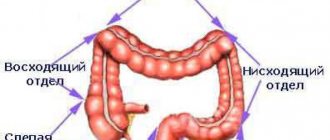Intestinal thrush or candidiasis is a disease that affects the mucous membranes of the gastrointestinal tract by yeast fungi - candida. In a normal state, fungi of this type are present in the intestines and this is quite normal, but the problem appears when they begin to intensively develop and multiply. Too high a concentration of candida in the intestines is already a pathology that causes a disruption of the normal microflora and a malfunction of the intestines.
Causes of intestinal candidiasis
Fungus of the genus Candida (under a microscope)
The body of a healthy person does not suffer from the presence of fungus. But if a malfunction occurs in the body, Candida begins to actively multiply and grow. In the intestines, the balance between beneficial bacteria and fungi is disrupted, resulting in intestinal upset. Sometimes candidiasis is classified as one of the forms of dysbiosis.
The cause of candidiasis is always a fungus, but there can be many factors that provoke its reproduction. Usually these are diseases that suppress the immune system, as well as violations of a healthy lifestyle:
- Poor nutrition. Not only junk food and fast food can provoke the growth of fungus, but also an abundance of sugar in foods. If you add a poor environment to poor nutrition, your chances of getting candidiasis increase.
- Poorly chewed food. It’s not for nothing that doctors say that you need to eat slowly and chew your food thoroughly. Large pieces, entering the stomach, then into the intestines, are poorly digested and not absorbed, causing constipation, various disorders and the growth of fungus.
- Stomach diseases. For stomach diseases, anti-inflammatory drugs are often prescribed, which negatively affect the intestinal microflora, allowing the fungus to actively multiply.
- HIV and immunodeficiency diseases. When immunity decreases, many diseases worsen. The immune system does not allow the pathogenic environment to multiply in the body; when it weakens, various infections and fungi are able to exist and develop, causing various complications.
- Oncology. With cancer, many organs and tissues are affected, the functioning of the circulatory system is disrupted, the immune system is suppressed, which provokes intestinal candidiasis.
Features of treatment for intestinal thrush
The basis of the treatment of anal candidiasis is an integrated approach. Therapeutic agents should be selected by a specialist, taking into account the history, dynamics, and individual characteristics of the patient. No information you read on the Internet (including this article) can become a guide to self-therapy. This factor must be taken into account.
When treating intestinal candidiasis, it is necessary to suppress not only the activity of this fungus. It is also necessary to identify what caused this decrease in immunity.
The main directions of treatment of the disease:
- symptomatic treatment;
- antifungal agents;
- immunostimulating drugs;
- restoration of the microflora of the entire intestine;
- elimination of the pathology that caused the development of candidiasis.
In the therapeutic plan, doctors usually include following a diet, as well as the use of folk remedies, for example, copper sulfate for colon candidiasis.
Symptoms of intestinal fungus
Intestinal fungus develops against a background of reduced immunity
Intestinal candidiasis has two common forms: non-invasive and invasive. Non-invasive candidiasis is less dangerous and occurs more easily. Invasive candidiasis penetrates deeper into tissues, affecting many organs. However, such a severe form of the disease is rare. Signs of a non-invasive fungal infection include the following symptoms:
- Abdominal pain. The fungus can cause cramps and abdominal pain. Most often, pain occurs after eating.
- Bloating. The fungus causes a fermentation process in the intestines, hence flatulence, gas, and bloating. In addition to the feeling of fullness, gurgling and rumbling in the stomach occurs not only on an empty stomach, but also after eating.
- Abnormal stool. Typically, intestinal candidiasis is accompanied by diarrhea. The stool is liquid with white flakes.
- Gradually, as the disease progresses, the stool becomes more and more liquid and watery. Diarrhea can occur after eating certain foods or on its own.
- Feeling of incomplete bowel movement. After visiting the toilet, the urge to defecate again occurs, which, as a rule, does not lead to anything.
- Weakness, migraine. With candidiasis, the body is weakened by diarrhea, weight loss, weakness, lack of appetite, headaches, and increased irritability are possible.
Read: What is intestinal peristalsis and how to normalize it
There are other signs of candidiasis that are not associated with intestinal disorders. These include various skin rashes: acne on the face and body, urticaria. Invasive candidiasis is characterized by more severe symptoms. It usually occurs in people with severely compromised immune systems, such as those living with HIV.
With this form of fungal infection, diarrhea mixed with blood is observed, many organs and systems of the body suffer, since Candida can circulate freely in the blood. Candidiasis can develop and progress if left untreated. Don't underestimate this disease. The fungus not only multiplies, but also destroys tissue.
Over time, the symptoms will only intensify, and the disease will become chronic, which can lead to various ulcerative lesions of the intestinal walls.
Diagnosis of candidiasis
Diagnosing candidiasis is not so difficult
At the first sign of a fungal infection, it is necessary to undergo examination. Before prescribing treatment, it is necessary to clarify the type of fungus. The examination must be comprehensive as results may vary.
Candidiasis can be detected accidentally during preventive testing or purposefully after a careful study of the patient’s symptoms and complaints.
A stool culture and a general analysis for the presence of fungus in the colon are required. We can talk about candidiasis only if Candida is present in large quantities simultaneously with a reduced content of lactobacilli and bifidobacteria.
A blood test is also taken to determine the level of immunoglobulins and the presence of antibodies. You will most likely have to donate blood more than once. If the level of immunoglobulins increases, then the infection is gaining momentum. In addition to feces, a urine test is taken for dysbacteriosis. It allows you to determine the degree of growth of the fungal infection. Candida waste products can also be found in urine. If they are present, then the disease has begun to develop.
If the results are too inconsistent, the doctor may order a colonoscopy, during which the condition of the intestinal mucosa can be visually assessed. It is necessary to evaluate the results of all examinations performed, since the partial presence of fungus in the body is normal.
Read: White-gray coating on the tongue as a symptom of the disease?
When candidiasis is diagnosed, other diseases that may accompany a fungal infection are also diagnosed. Only in this case can effective treatment be prescribed. There is a simpler home test for candidiasis, but you can’t trust it 100%. It is recommended to take a glass of purified drinking water (not tap or boiled) and spit into it. This should be done in the morning on an empty stomach before brushing your teeth.
Saliva will collect on the surface of the water. After some time you can see the result. If saliva has fallen to the bottom, the percentage of fungus in the oral cavity is higher than average. If saliva remains on the surface, the level of fungus is not exceeded and the cause of intestinal disorders lies in something else.
Prevention
Gastric candidiasis is a disease that is easy to prevent but difficult to cure. The main rule is not to bring the body to exhaustion and dysbiosis.
It is strong immunity and healthy intestinal microflora that protect the body from Candida fungus. To prevent pathogenic microorganisms from having a chance to infect the intestines and subsequently reproduce in it, it is enough to follow the rules:
- take any medications as prescribed by a doctor and in prescribed doses;
- organize a balanced diet;
- maintain oral hygiene, wash your hands more often;
- stop smoking and drinking alcohol;
- lead a physically active lifestyle, regularly take walks in the fresh air.
IMPORTANT! People with gastrointestinal diseases are at risk of stomach damage from Candida fungus. They need to especially carefully monitor the appearance of unpleasant symptoms and immediately contact a gastroenterologist.
Gastric candidiasis requires long-term, consistent therapy, especially in advanced conditions. Improvement in health occurs within 1 to 6 months.
Getting rid of fungus in the stomach leads to a general improvement in a person’s condition.
Treatment of fungal diseases of the intestines
Candidiasis may be asymptomatic at first
Each individual case of candidiasis requires an individual approach. The non-invasive form of candidiasis requires the use of antifungal drugs such as Flucanazole. Some of them can cause serious side effects, so a doctor should select one or another drug.
Pimafucin is very effective for intestinal candidiasis. It is available in the form of tablets coated with a special coating that protects the drug from gastric juice. This allows the medicine to reach the intestines and have a direct effect not on the fungus. Pimafucin is also taken for vaginal candidiasis, which is commonly called thrush. In the first days of taking Pimafucin, nausea may occur, which then goes away on its own.
Antifungal drugs are available in the form of tablets and injections. The dosage is determined based on the patient's weight. Doctors recommend taking a course of injections, since tablets are not always able to deliver medications to the intestines. Most of the drugs are absorbed in the stomach.
Invasive candidiasis requires more serious treatment. Antibacterial drugs are often added to antifungal drugs. An organism with a weakened immune system is susceptible to attack by various viruses and bacteria. Further treatment does not differ from the treatment of dysbiosis. It is necessary not only to reduce the number of pathogenic fungi, but also to ensure an increase in beneficial microflora. For this purpose, patients are prescribed probiotics and prebiotics. They help populate the intestines with beneficial bacteria and provide them with comfortable living conditions.
Read: Hepatic colic - symptoms, causes and first aid for the patient
Typically, probiotics are prescribed after completing a course of antifungal medications. But modern probiotic preparations are resistant to the effects of other drugs, so they can be taken simultaneously. In case of a fungal infection, it is recommended to reduce the load on the intestines. For this purpose, a special diet and digestive enzymes are prescribed, which promote more thorough digestion of food.
Women are not recommended to take birth control pills during treatment for candidiasis. They disrupt the microflora and interfere with recovery.
Drug therapy
For thrush of the rectum and anus, antimycotic agents are usually used. If the need arises, then drugs from a different pharmacological group are used to combat intestinal candidiasis, for example:
- Antifungal medications. These funds are selected taking into account certain factors: intensity of the disease, age, contraindications. Very often used in the form of tablets, injections, local preparations (for example, ointments, rectal suppositories). Common antifungal drugs include: Ketoconazole, Fluconazole, Nystatin, Pimafucin. When simultaneous drug therapy for another disease, preference is given to medications that will not be absorbed into the bloodstream, for example, the drug Pimafucin.
- Antibacterial medications. Used in case of any bacterial infection.
- Immunomodulatory and immunostimulating drugs. These include the following: “Timalin”, “Galavit”, “Suppositoferon”, “IRS-19” and others.
- Prebiotics and probiotics. Probiotics are a culture of living representatives of the intestinal flora that normalize its composition. As for prebiotics, these are compounds that promote the development of normal microorganisms in the intestinal environment. Together, these drugs inhibit the development of pathogenic microbes, while simultaneously normalizing the disturbed balance within.
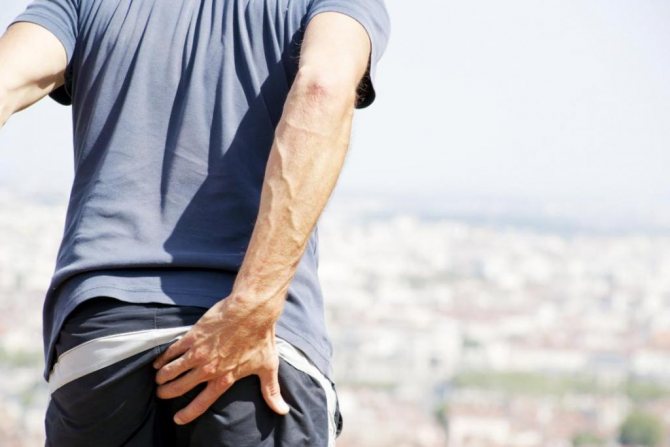
When treating intestinal candidiasis in women and men, taking contraceptives and corticosteroids is not recommended.
Diet and folk remedies
Intestinal fungus can be cured with the help of traditional medicine
A diet for candidiasis not only helps eliminate symptoms such as bloating and abdominal pain, but also helps reduce the proliferation of the fungus. During treatment, yeast dough should be excluded from the diet, as it enhances fermentation processes in the intestines.
You need to be careful when handling fresh fruit. Acidic fruits, such as citrus fruits and pineapples, create a favorable environment for fungal growth. Bananas and grapes contain large amounts of fructose, which also negatively affects treatment.
Unlike fruits, you can eat fresh vegetables in the form of salads with vegetable oil or just like that. You cannot eat honey, drink alcohol, as well as anything that can irritate the intestinal walls: store-bought sauces, vinegar, mayonnaise, ketchup, marinades, pickles, spicy and smoked. You should avoid eating mushrooms in any form and sausages. It is advisable that the dishes be prepared without frying or oil.
Useful foods for intestinal candidiasis include raw vegetables, lettuce, herbs, and garlic. Garlic is not only a useful product, but also a kind of medicine. Traditional medicine recommends this course of treatment for a fungal infection of the intestines: you need to eat 2 cloves of garlic per day, gradually increasing the dosage to 10 cloves per day. If it is difficult to eat garlic in its pure form, you can add it to carrot salad. You should not eat this amount of garlic if you have a stomach ulcer.
For candidiasis, it is good to drink Kuril tea. It tastes no worse than regular tea, but brew it with hot water, not boiling water, and let it brew for a few minutes. You can drink it like regular tea several times a day.
Horseradish will also help get rid of fungus. Grated fresh horseradish root should be added to salads. In the morning it is useful to drink a decoction of chamomile or St. John's wort. These herbs relieve inflammation in the stomach and intestines and help eliminate fungus and bacteria. It is better to brew the herb before bed and leave it to infuse overnight, and drink it on an empty stomach in the morning.
Read along with this article:
- Candidiasis of the rectum, what kind of disease it is, its symptoms and...
- Symptoms of intestinal candidiasis, which contributes to the proliferation...
- Candidiasis on the lips: information, etiology, possible symptoms,…
- How serious is it: yeast in a child’s stool
- Thrush in guys. The reason is dysbacteriosis???
- Thrush in the intestines, causes and treatment of the disease
- What is thrush in men, how dangerous is it?
- Intestinal candidiasis: what is it and why does it occur?
- Diet for esophageal candidiasis: prohibited and permitted foods
Preventive actions
Preventive measures include eliminating risk factors, treating diseases of the digestive tract, and strengthening general immunity. Medicines should be taken only under medical supervision; It is advisable to replace antibiotics with drugs that are more gentle on the microflora.
Gastric candidiasis, the treatment and symptoms of which indicate the need to follow a gentle diet, requires adherence to the rules of individual hygiene, thorough washing of vegetables and fruits, and leading a healthy and active lifestyle.
